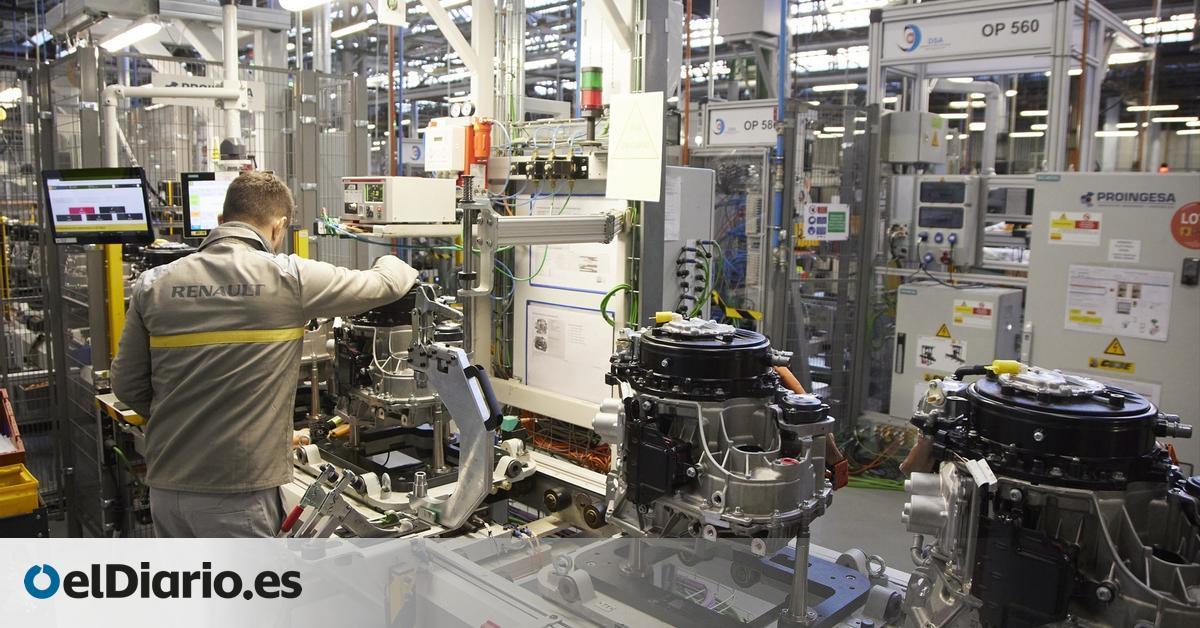
The labor reform and the new laws on companies, training and the ‘green’ transition already add 15,000 million euros to the Spanish economy. In the next decade, all the legislation linked to the Recovery Plan will raise our country’s GDP (Gross Domestic Product) by up to 50,000 million, according to estimates by the Ministry of Economic Affairs, to which must be added the direct impact of favored investments by European funds in these years.
The labor reform brings temporary employment to a minimum with young people as the main beneficiaries
Further
The economic reforms undertaken so far have increased the level of GDP by around one percentage point (15,000 million), at the end of the first quarter. And the rest that the Government is expected to undertake, such as unemployment benefits and others, or that it has just approved, such as housing, will add up to three integers in total between now and 2031.
The Spanish economy is already close to the pre-pandemic GDP level, which it reached at the end of 2019, after strong year-on-year growth of 5.5% in 2021 and another 5.5% last year, and 0.5% in the first quarter of 2023, in this case with respect to the last quarter of 2022. “Afterwards, economic growth would maintain its expansionary path, although it would gradually moderate, converging towards growth rates close to its potential,” explains the Ministry of which The first vice president, Nadia Calviño, is in charge.
In a recent article, the Bank of Spain assured that this potential growth goes from 1%, without a Recovery Plan, to 2% per year “in a scenario in which an adequate selection of investment projects financed with European funds is accompanied by structural reforms that favor economic growth”.
In this expansive path, the reformist impulse derived from the Recovery Plan will gradually take over from investments, as can be seen in the following graph. The direct impact of these investments by European funds raised Spain’s GDP by 1.3 points in 2022, and according to government forecasts it will add a whole 1.5 in 2023, almost 2 points in 2024, around 1 in 2025, and then it will stagnate at 0.5 each of the following years. And it will be in this second phase when the legislation that accompanies this deployment contributes most of the structural improvement of the economy of our country, until it exceeds 3 points in total.
Impact of the labor reform
So far, the labor reform is the one that is having the greatest impact on economic activity. But how does a labor reform raise the level of GDP? Causing fundamental, structural changes. The clearest: the reduction of temporary employment in the labor market to a minimum.
An effect that directly increases public revenue and decreases spending on benefits. Indirectly, by providing stability for companies and workers, it supports consumption by families in general. Also their ability to finance themselves, which is related to purchase decisions with greater added value, such as housing, or other durable goods such as cars, technology… Goods that, in addition, require greater “maintenance consumption”, according to described in economic theory. On the business side, it means potential improvements in productivity and competitiveness, even in internationalization.
Another structural effect is related “to a better fit [del mercado laboral] against future crises”, highlights the Ministry of Economic Affairs. That is to say, a “reduction of structural unemployment”, which is recognized by all institutions as the main problem of our country’s economy. The labor reform seeks that a recession does not entail a serious destruction of employment, which automatically means a smaller drop in GDP.
“Additionally, the reform of active employment policies would also allow the reduction of structural unemployment, favoring the matching between vacancies and the unemployed, as well as an increase in productivity”, they affect the Government.
Some examples: a worker sentenced to temporary employment, who goes from being a waiter, to unemployment, to later being a security guard, has great difficulties in improving his living conditions and is lethal for the productivity of the country as a whole. Likewise, it is a brake on growth in the medium and long term.
That same worker has a very difficult time getting a mortgage. The result is insecurity for him and a drag on Spain’s economic activity. The labor reform combats these situations. And if that worker now gets an indefinite contract, even if it is intermittent and his annual income does not change notably, his financial profile for the banks does change radically and also influences his purchasing decisions.
The formation
Another crucial transformation that is related to labor market reforms, training and the sharp increase in exports of non-tourism services is the creation of ICT (information and communication technology) and scientific jobs. Employment in these sectors is increasing at a rate of 25%, compared to 5% in other industries. And they are better paid jobs compared to the average.
Spain is selling more consulting, engineering, R&D, telecommunications or computer services than ever. And this trend implies a central role for the new Vocational Training law and the National Plan for digital skills, which, according to the Ministry of Economic Affairs, “will increase productivity, through the reallocation of workers to more productive sectors, bringing the offer closer to the demand of the labor market. Both reforms will make it possible to increase GDP in the long term [hasta 2031] by 0.6 percentage points”. This same calculation gives 2.1 integers only to the labor reform.
Finally, the Crea y Crece and Startups business laws would add 0.2 points to the economy in the next decade, due to their impact on productivity. While the measures related to the ‘green’ transition will encourage savings and a more efficient use of resources, making it possible to improve the competitiveness of Spanish companies, “with a positive impact on long-term GDP of another 0.2 percentage points ”.
The Recovery Plan “contains the necessary ingredients to significantly contribute to boosting the potential growth of the Spanish economy. However, its effectiveness will depend crucially on the quality of the selected investment projects and their complementarity with the implemented structural reforms”, warns the Bank of Spain.
Source: www.eldiario.es

